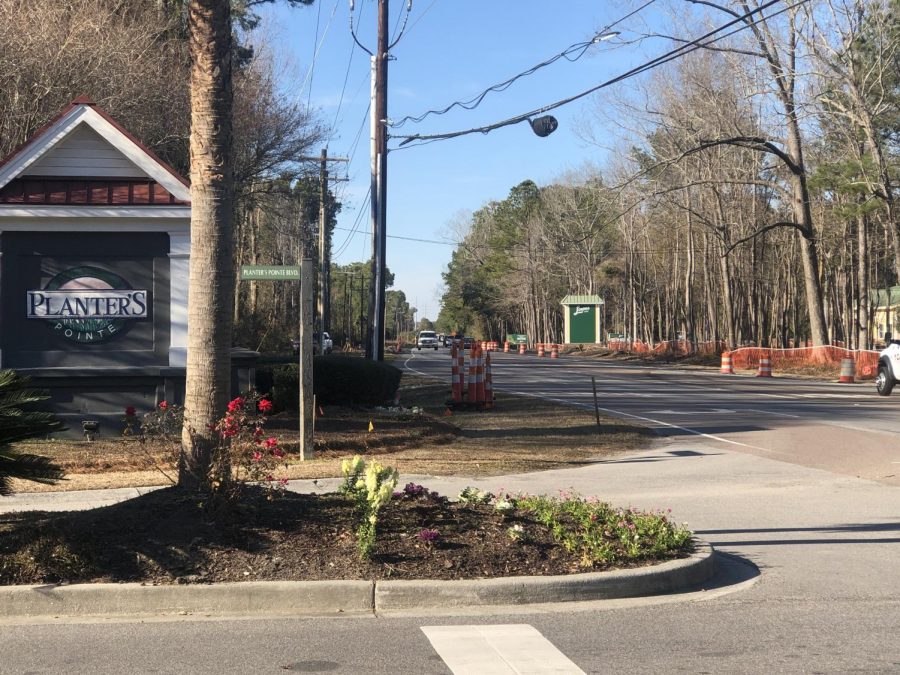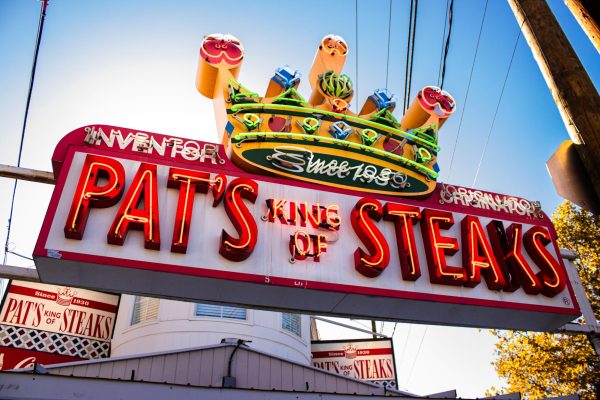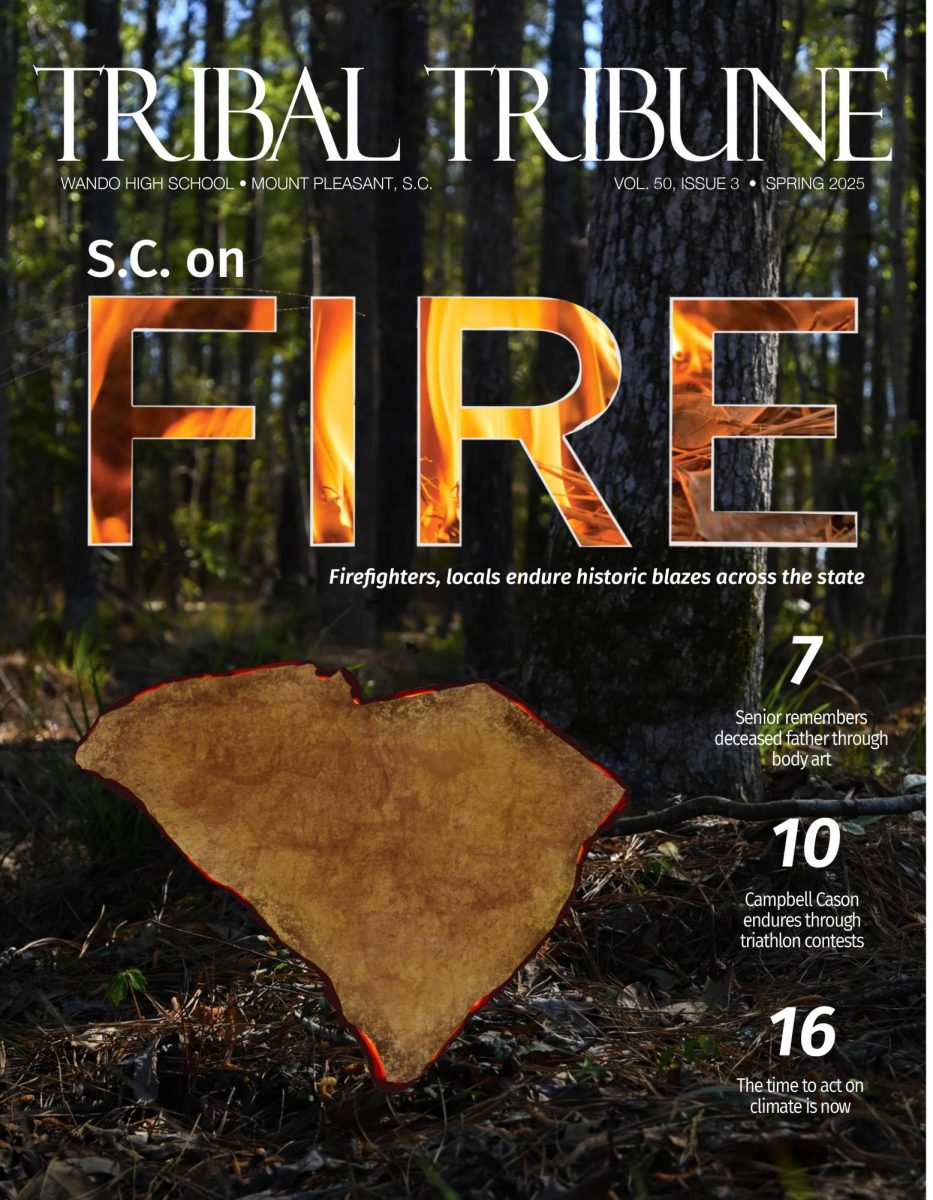A traffic nightmare- Examining Mount Pleasant’s growing traffic problem
February 11, 2019
Wando students, and Mt. Pleasant commuters, have experienced the traffic that makes driving more of a chore than it needs to. Ten minute drives sometimes turn into near hour-long ones, Highway 41 becomes a claustrophobic nightmare and getting anywhere requires the patience of a saint.
But is traffic really as bad as it’s made out to be? Have the rush hours of the day begun to define traffic through all of Mt. Pleasant?
Gary Ponder, the engineering technician for the Transportation Department of Mt. Pleasant, said the situation might not be as bad as many think — at least not yet.
“Overall, throughout a 24-hour period, it’s exaggerated saying traffic is just horrible. But during the peak, I do think it’s approaching some of those volumes where people get pretty frustrated,” Ponder said. “If you drive in the Summerville and James Island area in the same time of day, you’ll notice it’s much more difficult in those areas.
“It’s pretty much a reality because we don’t have the availability of alternate routes,” Ponder added.
The location and timing of these rush hours are no random time or odd happening. Wando students and working adults leave to go to and from work or school combine to create the traffic many see as they drive in Mt. Pleasant.
“It’s pretty much Johnny Dodds, Highway 17. But there are some areas, at certain intersections like Highway 17 and 41 that get much worse in the peak, just after Wando lets out. Then there’s Anna Knapp, it’s really heavy sometimes in the morning,” Ponder said. “… A lot of that too is influenced by connecting roads.”
These rush hours are the periods of time during the day in which traffic is the worst. As Ponder said, these periods of high intensity traffic are getting worse.
To respond to these growing rush hours, the town of Mt. Pleasant has some tools they can use to alleviate the burden of traffic.
“You’d start looking at the traffic signals and seeing what you can do to increase some time on the mainline, which would be 17, and try to let that empty out a little bit longer. That would probably be your first step,” Ponder said. “Second step would be looking at additional lanes, and then alternative routes. Is there room to build anything that would help alleviate mainline traffic.”
The addition of lanes to a pre-existing road has proven successful in the past when relieving traffic in Mt. Pleasant, but the government of Mt. Pleasant hasn’t stopped there.
“Eight years ago we added the additional lane in each direction [on 17], so it went from two to three lanes,” Ponder said. “When we widened Johnny Dodds from two lanes or four lanes to six, three in each direction… That significantly helped the traffic.”
The town of Mt. Pleasant currently has multiple road expansion projects underway, looking to replicate the success of alleviating traffic in the past from prior expansion.
“Now, the town, mainly driven by Charleston County, is going through the NEPA process, the National Environmental Protection Agency process, to widen Highway 41,” Ponder said. “They’re looking at different options for that, additional lanes, maybe different routes they could take around some of the communities, and I’m sure a significant portion of that would be the intersection improvement [at] 41 and 17.
“Park West Boulevard is widening, and we’re working on that project now too to widen where it goes from four lanes down to two lanes in Park West,” he added.
Ponder said the town can’t just build new roads or add new lanes whenever, though. It must also consider the externals that come with building on a potentially already busy road.
James Aton, the Transportation Operations Division chief of Mt. Pleasant’s Transportation Department, said that even the seemingly simple solution of adding an extra lane brings with it its own problems and complex processes.
“The problem you would see when constructing a new road is the construction timeframe. Take the Coleman project for example,” Aton said. “A two year project, there’s lane shifts, business are potentially affected. People may use alternative routes during that time, but there’s going to be some growing pains in any kind of roadway construction, especially on an existing roadway where you got to impact the day to day traffic…”
Before Mt. Pleasant has to deal with the effects of construction, the Transportation Department must undergo an extensive planning process.
“We rely pretty heavily on our Long Range Transportation plan, LRTP, that’s a process we go through once every five years,” Aton said. “That allows to take a view of our system and point out any problem areas we see that are being underserved capacity wide.”
This LRTP process seeks to find the right solutions in projects to any issues regarding traffic in Mt. Pleasant. Once these projects get chosen, they must go down a long path of acceptance before they are put into the construction phase. These projects can range from an additional lane to a whole new road.
“Through that LRTP process, every year we have a Capital Improvement Project, CIP. From that process you’ll have a long list of prioritized projects,” Aton said. “From that we take those projects and further them along as far as cost isn’t as concerning, then we take that to committee and council at the beginning of each year… where we submit those projects to the council, they vote on whether to approve those projects.”
Depending on the size of the approved project, third-party contractors put in competitive bids to work the project.
“When we take a project to bid, we have it broken up by line items…all the materials that would be required to build the project…” Aton said. “What the contractors do is they take the plans, review the plans from a constructability standpoint, and take those quantities and put up a unit price to each one of those quantities…”
Once Mt. Pleasant has decided on a bidder, paying for the resources, the contractors get to work, the final piece in the process of realizing a road expansion project.
Aton’s sentiments regarding the truth of traffic in Mt. Pleasant were in line with Ponder’s. He still recognizes the massive rush hour booms that can occur in traffic though.
“We’re very healthy,” Aton said. “If you compare our city to other cities around us, Columbia, Greenville, we definitely have a very healthy traffic system. We move 50,000 plus vehicles a day on 17, about 40,000 along Coleman, we’re definitely moving traffic. It definitely works, but there’s only so much the roads can take as far as capacity, during the peak periods and afternoon rush.”







Al Fisher • Feb 12, 2019 at 12:13 PM
Widening Hwy 41 is a great idea. Building a multi lane highway through existing residential neighborhoods is NOT a great ides. If there are other considerations, please let us know.
Thanks for listening.